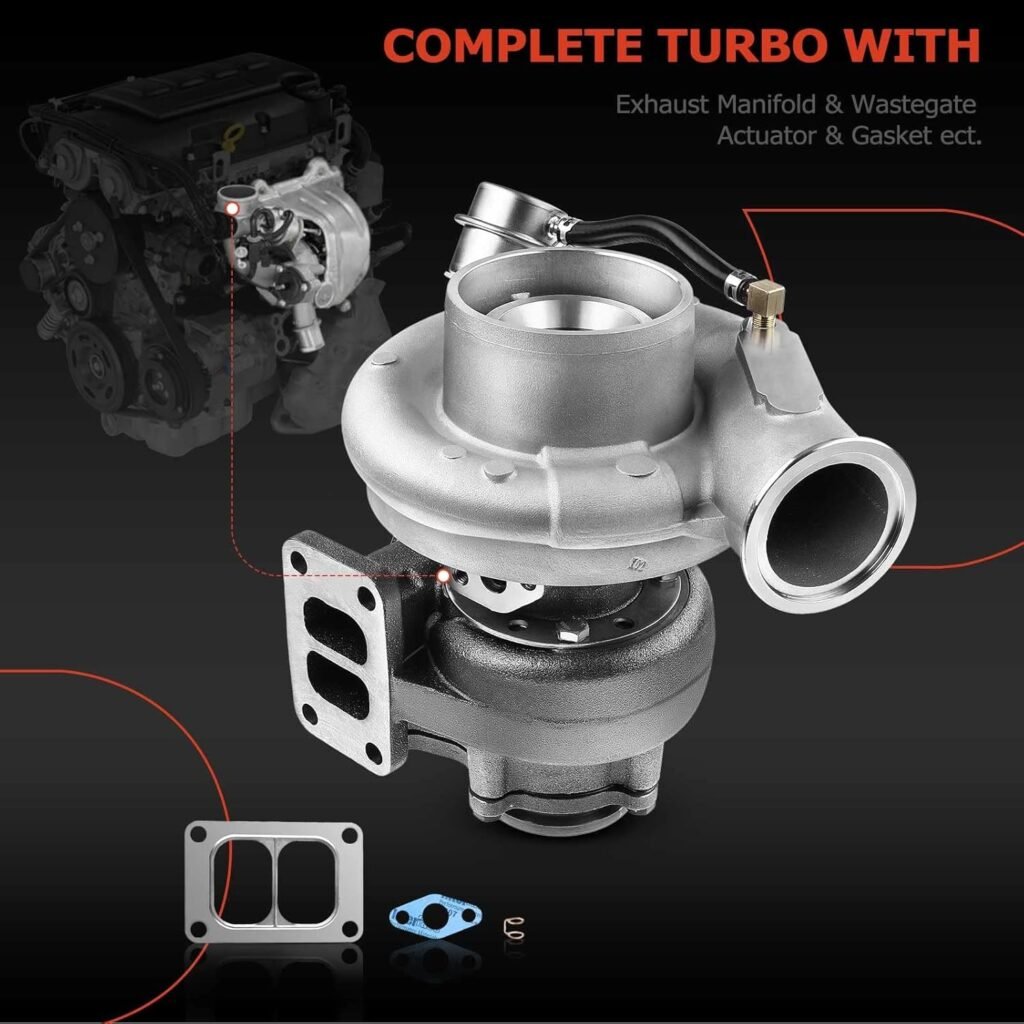Auto turbocharging is a technology used in internal combustion engines to enhance performance and efficiency. Here’s a brief overview:
What is Turbocharging?
Turbocharging involves using a turbine-driven forced induction system to increase the engine’s air intake. This allows more air and fuel to enter the combustion chamber, resulting in more power from the same engine size.
How It Works:
Exhaust Gases: The engine’s exhaust gases spin a turbine connected to a compressor.
Air Compression: The compressor draws in ambient air and compresses it before sending it into the engine.
Increased Power: The added air allows for a richer fuel mixture, leading to more power during combustion.
Benefits:
- Increased Power: Provides a significant power boost without the need for a larger engine.
- Improved Efficiency: Can enhance fuel efficiency by extracting more energy from the fuel.
- Reduced Emissions: Often leads to lower emissions compared to naturally aspirated engines.
How does turbo lag affect driving experience?
Turbo lag can significantly affect the driving experience in several ways:
1. Delayed Response
- Initial Acceleration: When the driver presses the accelerator, there may be a noticeable delay before the turbocharger kicks in and provides additional power. This can make the car feel sluggish at low RPMs.
2. Driving Dynamics
- Throttle Sensitivity: Drivers may need to adjust their driving style to account for the lag, requiring a more anticipatory approach to acceleration and overtaking maneuvers.
3. Engine Performance
- Power Delivery: The power delivery may feel uneven. Initially, the engine may feel underpowered until the turbo spools up, leading to a sudden surge of power once it does.
4. Cornering and Handling
- Mid-Corner Acceleration: In situations like cornering, where drivers often want to accelerate out of a turn, turbo lag can disrupt the flow and require careful throttle management.
5. Driver Confidence
- Predictability: Drivers may feel less confident in their vehicle’s responsiveness, particularly in high-stakes situations like merging or passing at highway speeds.
Mitigation Strategies
Hybrid Systems: Hybrid vehicles sometimes use electric motors to fill the power gap before the turbocharger activates.
Turbo Technology Improvements: Modern turbochargers often use technologies like twin-scroll designs or variable geometry to reduce lag.
Engine Tuning: Some manufacturers tune their engines to minimize lag, providing a more immediate response.
What are some examples of cars with minimal turbo lag?
Several modern cars are designed to minimize turbo lag, thanks to advancements in turbocharging technology and engine tuning. Here are some examples:
1. Volkswagen Golf GTI
- Known for its responsive 2.0-liter turbocharged engine, the Golf GTI offers quick throttle response and minimal turbo lag, making it a favorite among enthusiasts.
2. Ford Fiesta ST
- This compact hatchback features a turbocharged 1.6-liter engine that delivers power smoothly and quickly, with minimal lag during acceleration.
3. Audi S4
- The Audi S4 employs a supercharged V6 engine that provides immediate power delivery, effectively reducing turbo lag and enhancing the overall driving experience.
4. Porsche 911 (Turbo Models)
- Porsche’s turbocharged 911 models are engineered for high performance, with technologies that help minimize lag, allowing for instant power delivery.
5. Mazda MX-5 Miata (with Turbo)
- While the standard Miata is naturally aspirated, turbocharged versions maintain responsiveness, offering a lively driving experience with minimal turbo lag.
6. Subaru WRX
- The WRX features a turbocharged flat-four engine that provides quick boost and strong performance across the RPM range, making it a favorite for rally enthusiasts.
7. Honda Civic Type R
- The turbocharged 2.0-liter engine in the Civic Type R is known for its linear power delivery and minimal lag, contributing to its reputation as a performance hatchback.
8. BMW M2 Competition
- Featuring a turbocharged inline-six engine, the M2 Competition delivers power smoothly and responsively, with technologies in place to reduce lag.
These vehicles showcase how engineering innovations can effectively reduce turbo lag, offering a more engaging and responsive driving experience.
Applications:
Turbocharging is commonly found in various vehicles, including sports cars, trucks, and even some passenger cars, as manufacturers seek to balance performance with fuel economy.
Considerations:
While turbocharging offers many advantages, it can also lead to issues such as turbo lag (the delay before the turbocharger provides boost) and increased complexity in engine design.
In summary, turbocharging is an effective way to boost engine performance and efficiency, making it a popular choice in modern automotive engineering.
